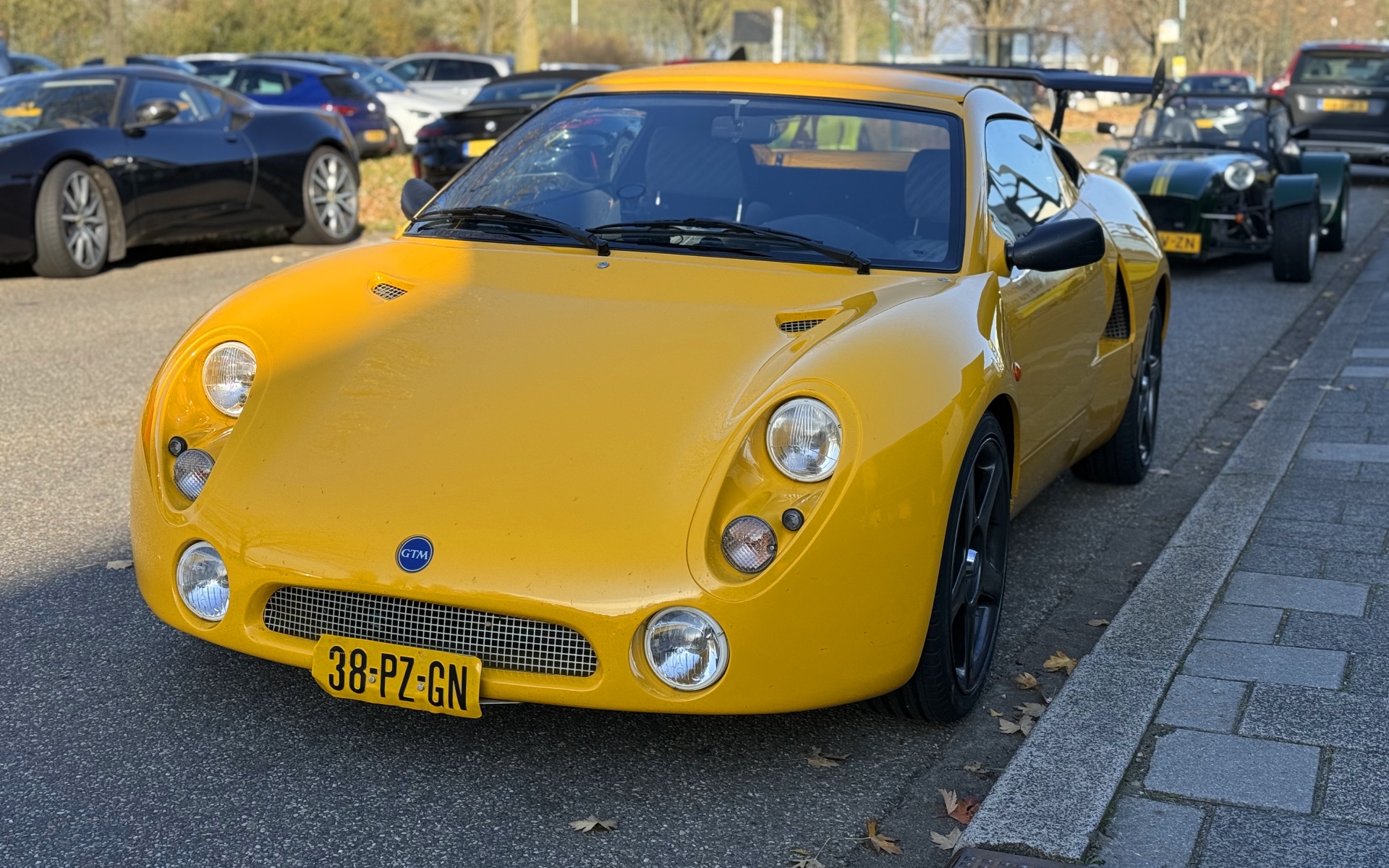Spotted: GTM Libra is super rare!
GTM Libra is a model of GTM Cars
When GTM Cars introduced the Libra in 1998, the British company took a clear step toward a more mature sports car concept. The car was not an evolution of existing GTM models, but a completely new design. The result of three years of development by directors Peter Beck and Paddy Fitch, with bodywork by designer Richard Oakes and a unique suspension by Bryn Davies. The Libra was presented to the British kit car market, but its construction and detailing made it feel more like a compact sports coupe with its own identity.
Monocoque as a base
The technical basis of the Libra was a GRP monocoque. GTM deliberately chose a construction without subframes. Suspension points were mounted directly to the fiberglass fairing. It made for a light structure with a roadworthy weight of 695 kilograms. That weight, by the way, was highly dependent on the chosen powertrain. The weight of this particular example with Dutch registration plates, for example, is 850 kilograms (unladen weight). The compact dimensions – 3.56 meters long, 1.65 meters wide and 1.15 meters high – made the car agile. With a wheelbase of 2.32 meters, the Libra was short, yet stable enough for a mid-engine configuration.
Suspension with GTM signature
The front suspension consisted of unequal-length wishbones designed by GTM itself. The knuckles came from the Rover Metro/100 series. A forward-mounted steering gear created additional interior legroom. At the rear, GTM opted for a double trailing arm setup, a less common solution. The rear steering knuckles were identical to those of the front, which simplified parts logistics. The engine and transmission hung in a frame against the bulkhead. That frame also carried the hinged engine cover with integrated luggage compartment. A set of golf clubs fit inside, illustrating GTM’s practicality.

Two trunks and an open roof
In front sat a large clamshell that covered the radiator, battery and master cylinder. Below that was room for a full-size spare tire, regardless of whether the car was on 16- or 17-inch wheels. The roof consisted of a removable panel. That could be stowed behind the seats for an open driving experience. So the Libra combined low weight with practicality, a rare combination in the kit car world.
Engines: from Rover to Toyota and Audi
At its inception in 1998, the Libra came with the 1.4-liter Rover K-series engine. The K-series fit well with the lightweight philosophy. Later, 1.6- and 1.8-liter variants followed, including the 1.8 VVC. The most powerful Rover option was the 2.5-liter KV6, as this yellow example also has. Because the Libra was also sold as a kit without a powertrain, builders experimented with alternatives. The Toyota 2ZZ-GE was a popular choice. Honda engines and the Audi 1.8T were also successfully incorporated. The diversity made the Libra a flexible platform for customers who wanted to tinker or race themselves.
The role of GTM Cars
To properly understand the Libra, the background of GTM Cars is relevant. The company started in 1967 when Bernard Cox and Jack Hosker built the Cox GTM. A compact mid-engine sports car based on Mini parts. The first fifty kits sold quickly. After that, Howard Heerey and his father took over production. In 1972, they had to stop due to road work near their workshop. After that, the project changed hands several times without major further development.
That changed in 1980, when Peter Beck and Paddy Fitch took over GTM. The Coupe was refined and new models followed. The Rossa line marked the move to a more modern design style. With the advent of the Rover K-series, GTM introduced the Rossa K3, one of the first mid-engined cars with this engine. Well-known brands would follow suit.

The road to the Libra
After years of Mini-based models, GTM wanted to take a step higher. A car that no longer leaned on old donor platforms, but formed an independent design. In 1998, the Libra appeared as a result. The car had no panels or structural parts in common with earlier GTM models. It was more cleanly lined, more efficiently built and aimed at drivers who wanted a kit car with the look and feel of a compact sports car.
The Spyder followed four years later. A lighter, open variant with visual affinity, but its own bodywork. The Spyder did use the same monocoque base.
Among RDM Group and Potenza
In 2003, GTM was acquired by RDM Group. Production moved to Coventry. RDM developed two new concepts: the Ballista and the 40TR. Both did not progress beyond prototypes. The Libra and Spyder remained the core of the program.
In 2007, GTM joined Potenza Sports Cars, also owner of Westfield. GTM models were henceforth presented as Westfield GTM. The range remained limited. In 2010, Westfield announced that parts supply was becoming problematic. As a result, sales of the existing GTM models ceased. A new GTM generation was announced, but never released.
End of a brand
GTM Cars lasted until 2022. After more than fifty years, the company was placed in administration. A history with many peaks, changes of ownership, and technical experiments thus came to an end. The Libra and Spyder remained the best-known models from the brand’s final phase.

